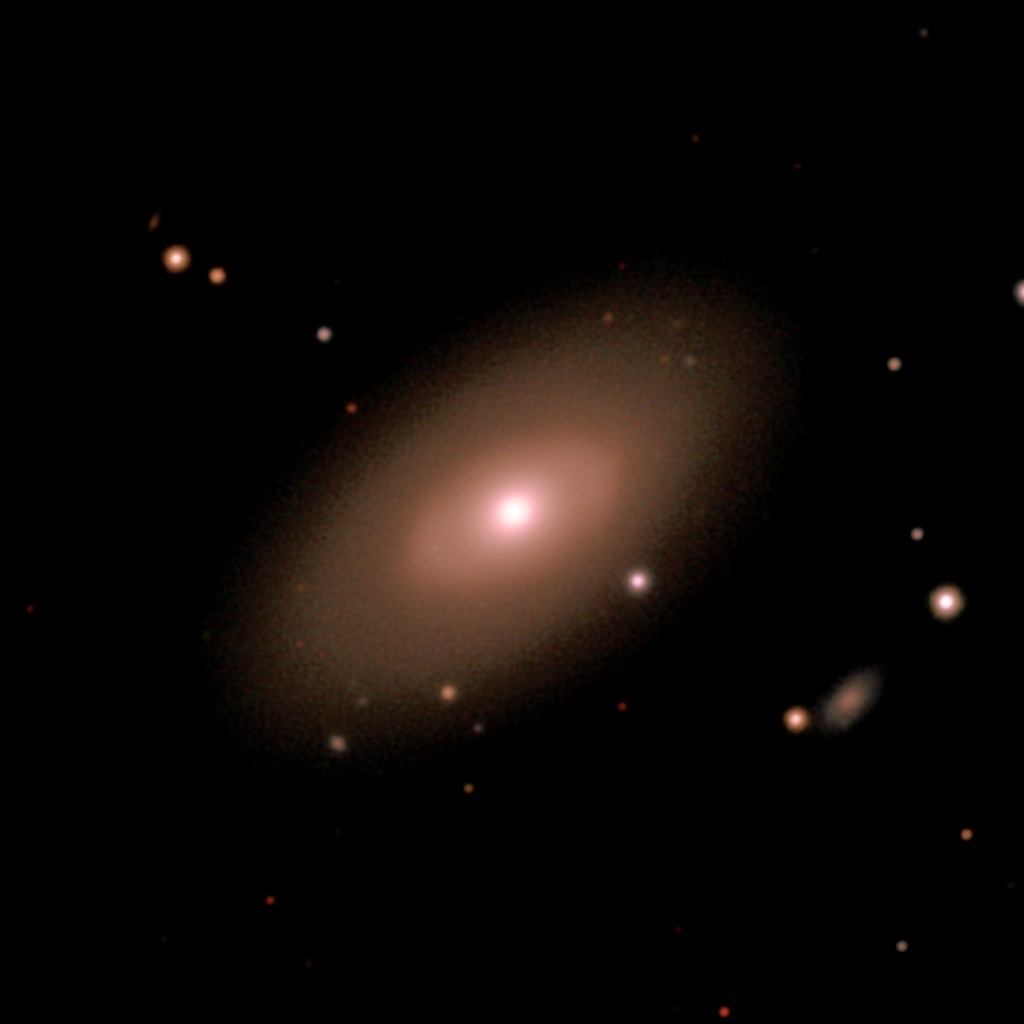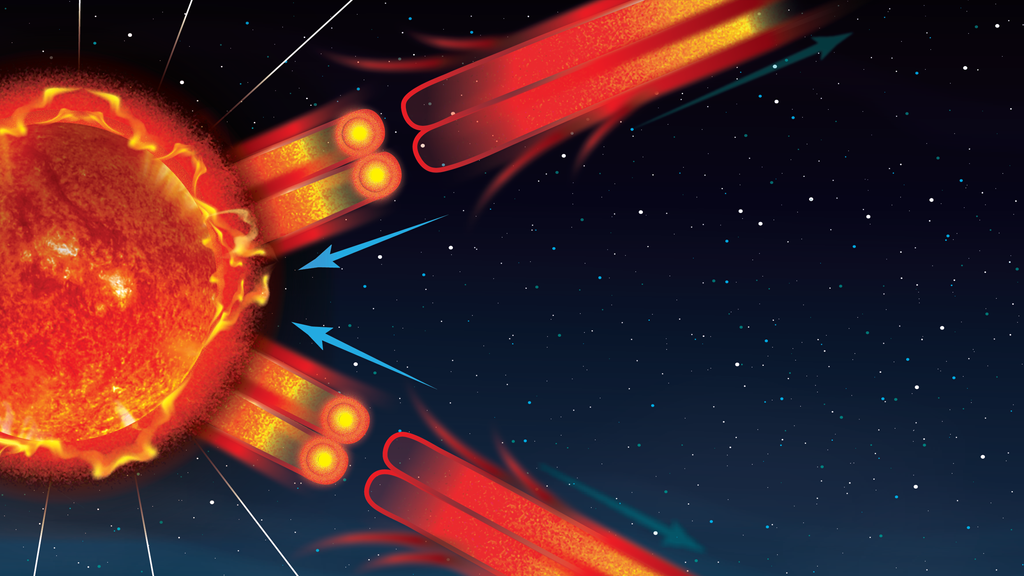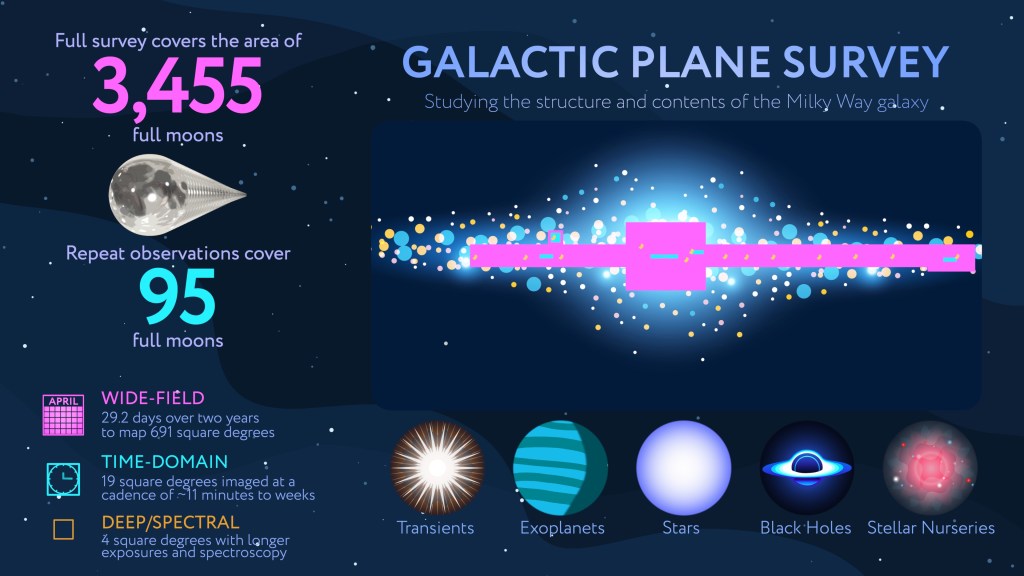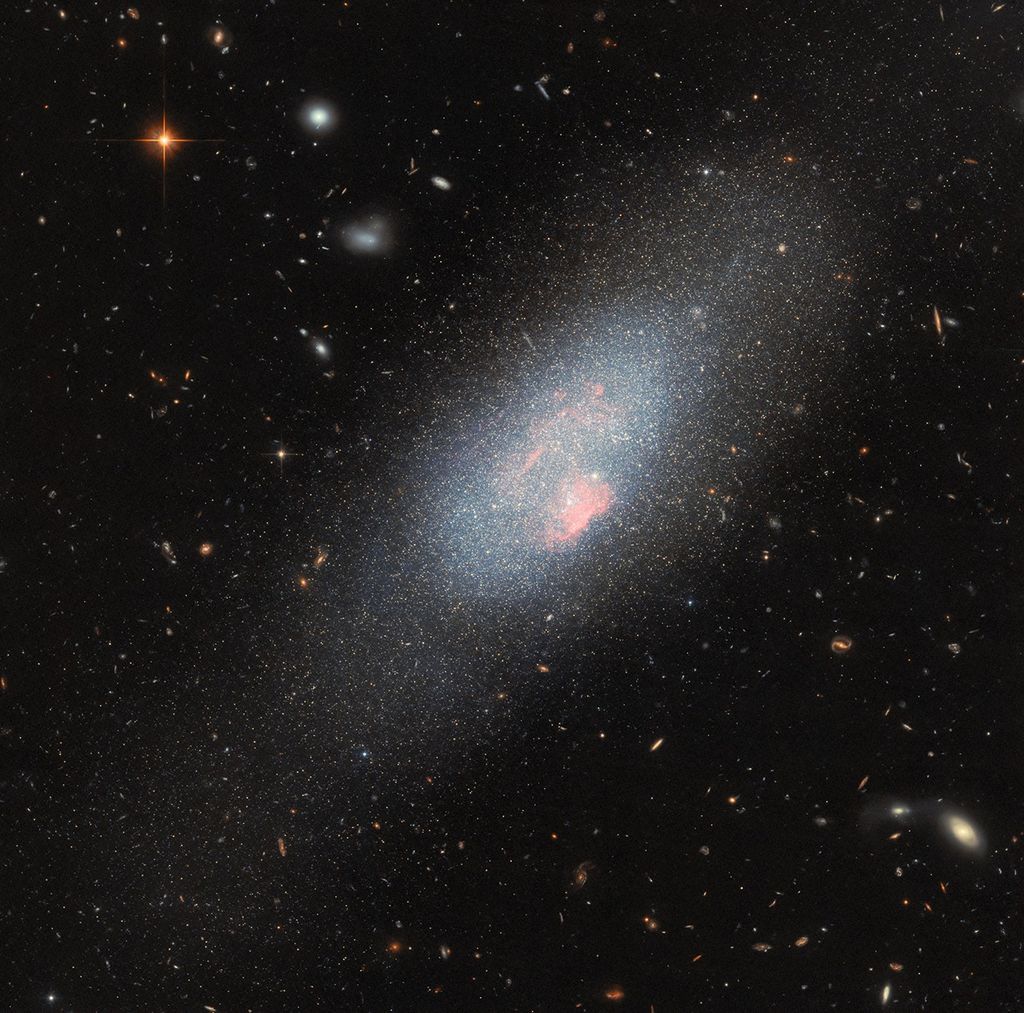1 min read
Herbig Haro 32: Jets of Material Ejected From a Young Star

HH 32 is an excellent example of a "Herbig-Haro object," which is formed when young stars eject jets of material back into interstellar space. This object, about 1,000 light-years from Earth, is somewhat older than Hubble's variable nebula, and the wind from the bright central star has already cleared much of the dust out of the central region, thus exposing the star to direct view. Many young stars, like the central object in HH 32, are surrounded by disks of gas and dust that form as additional material is attracted gravitationally from the surrounding nebula. Material in the disk gradually spirals in toward the star and eventually some of it accretes onto the star, increasing its mass. A fraction of the gas, however, is ejected perpendicularly to the disk at speeds near 200 miles per second, and forms two oppositely directed jets. These jets plow into the surrounding nebula, producing strong shock waves that heat the gas and cause it to glow in the light of hydrogen atoms (green) and sulfur ions (blue), several other atoms and ions, and sometimes radiation from the exciting star that is reflected by the surrounding gas (red). This glow is called a Herbig-Haro object, in honor of astronomers George Herbig and Guillermo Haro, who did much of the early work in this area in the 1950's. The jet on the top side, whose furthest extent is about 0.2 light-year from the star, is pointed more nearly in our direction, while the opposite jet on the bottom lies on the far side of the star and is fainter either because it is partially obscured by dust surrounding the star or because there is much less material in front of the star.
The Hubble Heritage team (NASA/AURA/STScI) made this image from observations of Herbig-Haro 32 acquired by Salvador Curiel, Jorge Cant", Alejandro Raga, (UNAM), Alberto Noriega-Crespo (IPAC), and collaborators.
About the Object
- R.A. PositionR.A. PositionRight ascension – analogous to longitude – is one component of an object's position.19h 20m 30.0s
- Dec. PositionDec. PositionDeclination – analogous to latitude – is one component of an object's position.11° 1' 59.99"
- ConstellationConstellationOne of 88 recognized regions of the celestial sphere in which the object appears.Aquila
- DistanceDistanceThe physical distance from Earth to the astronomical object. Distances within our solar system are usually measured in Astronomical Units (AU). Distances between stars are usually measured in light-years. Interstellar distances can also be measured in parsecs.300 pc (960 light-years) from Earth
- DimensionsDimensionsThe physical size of the object or the apparent angle it subtends on the sky.The image is 1.6 arcminutes on the vertical side. The end of the optical jet is 40" (~12,000 AU) from the central star. The total length of the bipolar outflow is about 0.17 parsecs or 0.54 light-years.
About the Data
- Data DescriptionData DescriptionProposal: A description of the observations, their scientific justification, and the links to the data available in the science archive.
Science Team: The astronomers who planned the observations and analyzed the data. "PI" refers to the Principal Investigator.Principal Astronomers: S. Curiel, Jorge Cantó, Alejandro Raga (Instituto de Astronomía, Universidad Nacional Autónoma de México), Alberto Noriega-Crespo (IPAC), and collaborators. - InstrumentInstrumentThe science instrument used to produce the data.HST>WFPC2
- Exposure DatesExposure DatesThe date(s) that the telescope made its observations and the total exposure time.August 25, 1994, Exposure Time: 3.8 hours
- FiltersFiltersThe camera filters that were used in the science observations.F673N ([S II]), F656N (H-alpha), and F675W (R)
- Object NameObject NameA name or catalog number that astronomers use to identify an astronomical object.Herbig Haro 32, HH 32
- Object DescriptionObject DescriptionThe type of astronomical object.Herbig-Haro Object
- Release DateOctober 7, 1999
- Science ReleaseHubble Heritage Project’s First Anniversary
- Credit

Blue: F673N ([S II]) Green: F656N (H-alpha) Red: F675W (R)
Related Images & Videos
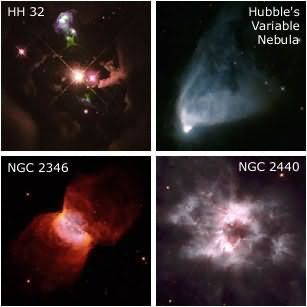
Hubble Heritage Project's First Anniversary
To mark the first anniversary of the Hubble Heritage Project, we present four NASA Hubble Space Telescope images of nebulae surrounding stars in our own Milky Way galaxy. Two of these Wide Field Planetary Camera 2 images (Herbig Haro 32 and Hubble's Variable Nebula) show...

Hubble's Variable Nebula (NGC 2261)
Hubble's variable nebula is named (like the Hubble telescope itself) after the American astronomer Edwin P. Hubble, who carried out some of the early studies of this object. It is a fan-shaped cloud of gas and dust which is illuminated by R Monocerotis (R Mon), the bright star...
Share
Details
Claire Andreoli
NASA’s Goddard Space Flight Center
Greenbelt, Maryland
claire.andreoli@nasa.gov


